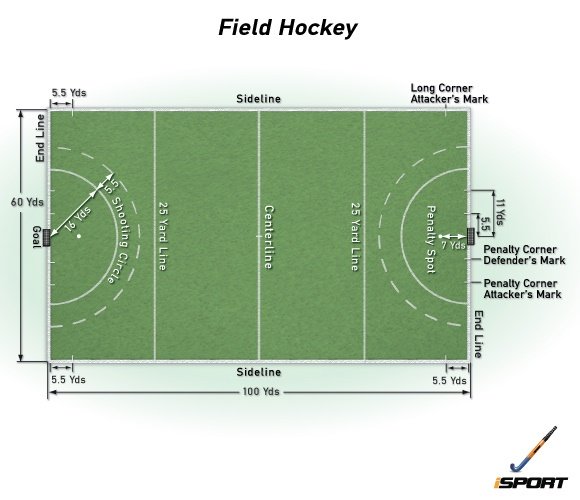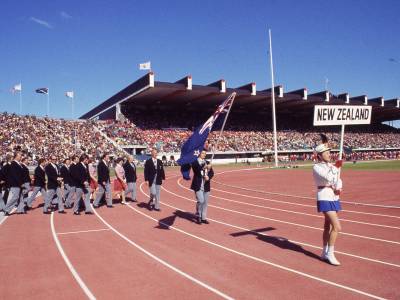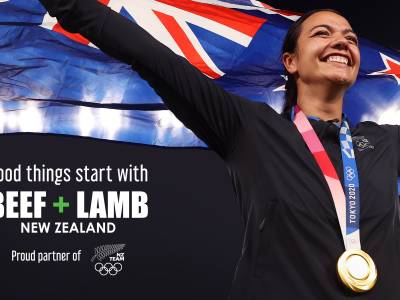Hockey is a team sport, often referred to as field hockey in the USA, Canada and European countries where ice hockey is played. A hockey team has 11 players, including a goalie, and the game is played outdoors on an artificial turf.
Competition
The Men's and Women's teams are split into two pools. After pool play, the top two teams from each pool (based on points) progress to the semi-finals. The winners of each semi-final play in the gold medal match. The losers of each semi-final play in the bronze medal match. All remaining teams play-off for a final position in the tournament.

Demystifying some rules of play
- Long corner - Awarded to attacking team when the ball is accidentally hit out the back line by the defending team. Free hit taken from the 25 yd line.
- Substitution - A player can replace a team-mate on the pitch any number of times and at any point in the match, except when a penalty corner is being taken.
- Goals - Ball must be hit or touched in the goal circle by the attacking team, and must pass over the goal line. If a field goal (ie, a goal scored from open, continuous play), then the ball can hit the net or back board. If a penalty corner, then the ball must strike the back board if the shot is hit, but if it is drag-flicked then it can be higher than the board and hit the net.
- Free hit - Awarded to a player when there is an infringement by an opposing player. The 5m rule applies – all players have to be 5m away from the player taking the free hit, and the ball must travel 5m before it can be passed to another player.
- Penalty corner - Awarded to attacking team when there is accidental infraction by a defender or goalie in the circle, or an intentional infraction inside the 25 yard line, or the defender intentionally hits the ball out the back line.
- How it is played out - Five defenders behind goal line; ball pushed out by attacker from point 10 yds from post (any side), defenders can run out after ball; ball must move outside the circle and then go back inside before a shot at goal taken. If shot is HIT it must be not be higher than backboard (18") – if FLICKED it can be higher.
- Penalty stroke - Awarded to the attacking team when there is intentional infraction in the circle or an unintentional infraction preventing a sure goal.
- How it is played out - Time-out called. All players behind 25 yd line except goalie and striker. Goalie stationary with heels on line. When umpire sees both goalie and striker are 'ready' – blows whistle. Striker must start behind ball and must then push or flick ball – not hit. If Goalie saves the ball or striker misses goal, defending team receives a 16 yd hit.
Cards - So what do the 'cards' mean?
- Green card (You're off for 2 minutes) - A card signifying the umpire has suspended a player.
- Yellow card (You're off for 5 or 10 minutes) - A card signifying the umpire has suspended a player. The umpire indicates the length of suspension by signaling one hand or two hands.
- Red card (You're off for good) - A card shown by the umpire to suspend a player for the rest of the game.
Other terms you may not know
- Bully - A method of restarting play following a stoppage not caused by a breach. Two players face each other, and tap their sticks on the ground and together before contesting the ball.
- Circle - Short for the "striking circle", "goal circle" or "shooting circle" or "D" – a D-shaped area in front of each goal. An attacker must take a shot from inside the circle to score a goal.
- Drag-flick - Drag-flicking is a scoring technique and is used as a variant to the "straight shot" or hit. The drag-flick is classified as a push as the player drags the ball a small distance before flicking it towards the goal. Drag-flicks are especially common during penalty corners.
- Field goal - A goal scored from open, continuous play.
- Hit-in - A free hit from the sideline after the ball has gone out of play over the line. It is taken by the team not last to touch the ball.
- Obstruction - The offence of using the body or stick to shield or hinder another player from hitting the ball, or of physically interfering with an opposing player.
Did you know?
Until the 1970s hockey was played on grass turfs. The introduction of synthetic turfs in the early 1970s has made for a much faster and more exciting game.
Elite-level competitions, such as the Olympic Games and the World Cup, require a water-based turf – a synthetic turf with shorter fibres and wetted turf which reduces friction and increases the speed at which the game can be played.
New Zealand's only Olympic medal was won in 1976 when the men's team, coached by Ross Gillespie, caused an upset in Montreal by beating Australia 1-0 to win gold.
The Indian men's team dominated Olympic hockey between 1928-1956, with six consecutive titles, remaining unbeaten in 30 consecutive matches, scoring 197 goals, and giving away only eight.
Goal keepers are the only players who are allowed to touch the ball with any part of their body.
A goalie wears a helmet, leg guards, kickers, chest guards, padded shorts, heavily-padded hand protectors, groin protectors, neck guards, arm guards, and like all players, they must carry a stick. It takes a goalie about 15 minutes to put all their gear on.
Some of the new hockey sticks are made of carbon fibre and use material to keep the stick light, but still allow the player to hit with power.
There are no left-handed sticks in field hockey and players may use only one side of the stick.
Some Black Sticks take six different types of sticks when they travel to a tournament.
Tweet Share
Hockey Games History
-
Commonwealth Games Birmingham 2022
-
Olympic Summer Games Tokyo 2020
-
Commonwealth Games Gold Coast 2018
1 1 -
Olympic Summer Games Rio 2016
-
Commonwealth Games Glasgow 2014
1 -
Olympic Summer Games London 2012
-
Commonwealth Games Delhi 2010
1 1 -
Olympic Summer Youth Games Singapore 2010
1 -
Olympic Summer Games Beijing 2008
-
Australian Youth Olympic Festival Sydney Youth Festival 2007
1








